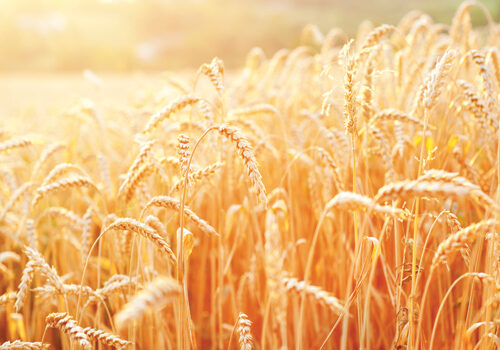A new study out of the Harvard School of Public Health (HSPH) and published in Nature links higher atmospheric carbon dioxide (CO2) levels with worsening nutrient deficiencies worldwide. Specifically, levels of zinc and iron, nutrients much of the world is already deficient in, may be under threat.
At the levels of CO2 currently anticipated by the year 2050, grains and legumes that provide most of the global population with zinc and iron will have less of these nutrients to offer, researchers found. They call it the most significant health threat ever predicted in connection with climate change because about 63 million life years are thought to be lost annually from iron and zinc deficiencies. An estimated two billion of the globe’s more than seven billion people don’t get enough of these nutrients.
“This study is the first to resolve the question of whether rising CO2 concentrations—which have been increasing steadily since the Industrial Revolution—threaten human nutrition,” said Samuel Myers, the study’s lead author, in a statement. Previous studies into the same phenomenon found reduced nutrient content with elevated CO2, but used artificial growing conditions like greenhouses. Other studies have previously used free air carbon dioxide enrichment (FACE), as this study did, but they had small sample sizes. FACE allows plants to be grown in normal field conditions but with artificially elevated levels of CO2.
This study analyzed 41 cultivars of legumes and grains that use C3 and C4 carbon fixation (a step in photosynthesis) from seven FACE locations in the United States, Australia and Japan. After they were grown at CO2 concentrations between 546 and 586 parts per million (the level models predict for mid-century), the researchers tested nutrient concentrations in the edible portions of the plants. Wheat, rice, maize, sorghum, soybeans and field peas were the crops examined.
Zinc and iron levels significantly decreased in C3 grains. Wheat, for instance, saw its zinc and iron levels fall by 9.3% and 5.1% respectively. Protein content in the C3 grains also dropped significantly compared with those grown at current CO2 levels. Zinc and iron also fell sharply in legumes, while protein did not. C4 crops, as expected, were less affected by more CO2, as these plants process carbon differently.
People in the developing world rely especially on C3 crops for these nutrients. Importantly, the different cultivars of rice examined were not all impacted equally by the increase in CO2, as some retained more zinc and iron than others. The researchers see this as an opportunity to breed sensitivity to increased CO2 levels out of future crops. Other options to help avoid this problem include fortifying crops with iron and zinc, and nutritional supplementation for the most affected populations.
Published in WholeFoods Magazine, July 2014










